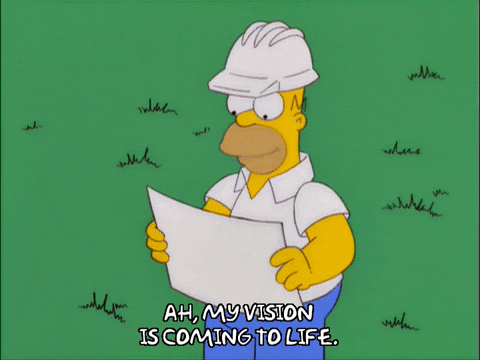Showing Up
This week, I’m thinking about consistency, lessons from a big Shopify acquisition, and what’s brewing inside our studio.
Growth Notes
I have a consistency problem.
I’ve lost count of the number of times I decided to blog, vlog, and consistently post about my work on social media.
In this increasingly noisy world, it’s becoming important to stand out by being seen. But being seen requires showing up—again and again. Even at times when I am lazy or think it is cringe to post.
James Clear talks about how “every action you take is a vote for the type of person you wish to become.” My inconsistent posting has been voting for someone who starts but doesn’t finish. That’s not the entrepreneur I want to be.
So I’m setting myself a different kind of challenge this time: one post per week on Instagram starting now, one Lonely Blue Pixel blog per week, one vlog per month as a wrap-up/reflection, and a few different social media posts across LinkedIn, Threads, and Instagram.
What Does It Take for a 7-Person Design Studio to Catch Shopify’s Attention?
I am always looking for inspiring founder stories to motivate myself to work harder.
This week, I discovered an inspiring exit story: Molly Studio recently got acquired by Shopify to become the new Shopify Product Design Studio.
The Brooklyn-based team will now operate as an “internal agency” within Shopify, reporting directly to Chief Design Officer Carl Rivera. But what made this small studio acquisition-worthy for a commerce giant?
The AI expertise advantage. Half of Molly’s projects over the past two years have been AI-related, and they developed internal frameworks for how AI and product design teams should work together. This gave them a competitive edge as brands scramble to integrate AI into their products.
The relationship-first approach. Shopify was already a client of the studio before the acquisition. Molly built trust through collaboration, not just pitches. They even hosted events together at their Brooklyn studio, including Demo Nights and Behind the Scenes gatherings. When acquisition conversations began, they were already proven partners.
Why Shopify made the move: “Design is the main differentiator in the age of AI,” says Rivera. Shopify bought Molly “for the way they solve problems as a unit” and believes the team will serve as a template for the rest of Shopify’s design structure.
The lesson for agencies: Build expertise in emerging technologies, develop genuine relationships with potential acquirers, and position yourself as a strategic partner, not just a vendor.
Our 3-Month Project Just Became a Year-Long Engagement
We teamed up with Vision Us to develop Pebblz—an app for youth employment that makes soft skills learning and resume building fun. What began as a simple 3-month project has now extended for a year, and here’s why that matters.
Vision Us came to us with a challenge: how can we help young people develop soft skills and make resume building fun?
Together we built version 1.0 of Pebblz in just 10 weeks.
Obsessive Communication
This client came in with serious skepticism. They’d previously worked with a dev team that failed to deliver for an entire year. Knowing this, I provided daily updates, no matter how small the progress. Showing proof of work being completed and breaking down each piece weekly assured them we’d deliver on time.
Fast Bug Fixes
We didn’t let bugs sit for days. If something was simple, we fixed it while the client was still on the call. With today’s AI tools, it’s easier than ever to quickly identify and ship fixes.
Valuable Strategic Advice
Since the client was non-technical, we provided extensive guidance on technology choices for cost savings, future-proofing the system, and optimizing product experience. This consultative approach showed we cared about their long-term success, not just completing the project. This also helped the client see us as true partners and not just a one-time vendor.
Kindness Goes a Long Way
Being genuinely kind and maintaining a sense of humour during client interactions creates lasting relationships. It sounds simple, but it’s often overlooked.
This 10-week project evolved into a true partnership. We’re now responsible for building Version 2 with more robust features.
The transformation happened because we treated the client as a partner from day one, not just as another project to complete.
I get it — it’s not always possible to go from a one-time project to a long-term engagement due to budget constraints or other issues from the client side. However, if you show this level of care, you will also end up being recommended within their circle. This is another great outcome that happened to us, and it’s been incredibly valuable for growing our business.
So here’s my question for you: What are you voting for with your actions this week?
Until next time 💙


